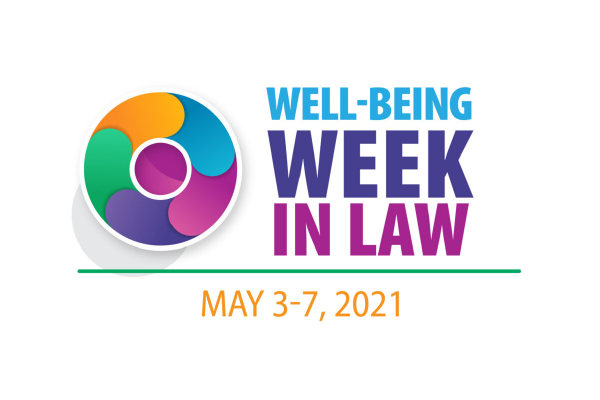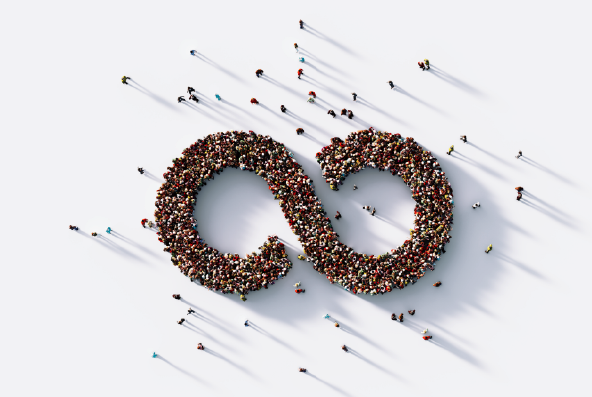Guidance for the legal profession on how to become an effective ally in antiracism was offered in a recent webinar from the Boston Bar Association.
All panelists for How to be an Effective Ally, presented by the BBA on June 30, 2020 expressed the specific need for those who benefit from white privilege to bear the responsibility of undoing the systems that create the privilege. “Unlearning personal prejudices should coincide with undoing the structures, logics and economic arrangements that perpetuate global anti-blackness,” as Momtaza Mehri wrote recently for The Guardian. In educator Dwayne Reed‘s recent words, “White supremacy won’t die until White people see it as a White issue they need to solve rather than a Black issue they need to empathize with.”
Importantly, the program began with the definition of an ally, for purposes of the discussion, as someone who is actively antiracist, as provided by moderator Bill Gabovitch, In-house Counsel at Primark US Corp. Panelists offering important considerations for those who aspire to be actively antiracist, particularly critical in the legal profession, included:
- Nahomi S. Carlisle, Director of Diversity & Inclusion & ADA Compliance at the Massachusetts Department of Public Health;
- Jamie Whitney, Senior Vice President and Head of Legal at State Street Corporation;
- Ben Sigel, Candidate for the U.S. House of Representatives in Massachusetts’ 4th Congressional District and President of the Hispanic National Bar Association – Region 1; and
- Laura Rees Acosta, Managing Director of Diversity & Inclusion at Goodwin
ALLYSHIP BASICS.
1. Listen First.
As a foundational principle to guide antiracist action, Nahomi Carlisle introduced the importance of listening first. While action is urgent, all panelists reiterated Nahomi’s guidance to recognize the need to seek the education we need to proceed responsibly.
It’s critical that our efforts to listen not burden oppressed groups further. We cannot expect our Black colleagues to teach antiracism in addition to their current work (and for no additional compensation), as Nahomi explained.
Also as Nahomi noted, finding sources of education has never been easier. Find resource listings on allyship from LCL MA here and from the BBA program here, compiled by Jameel Moore of the U.S. Department of the Interior. While plenty of information is free, it’s important to recognize that paying for our education helps fuel the work. We need to educate ourselves to be able to recognize the ways in which we benefit from white privilege and opportunities to make change, which often requires sacrifice.
While being eager to help is usually well-intentioned, rushing to action without listening first is negligent. Before we take effective action as allies, we need to listen to Black people and members of other oppressed groups to know what effective action is. Unavoidably, aspiring allies will encounter situations in which we learn the impact of our behavior isn’t aligned with our intent — and hearing feedback (in any form) is key to improving.
2. Move Past Fear of Discomfort, Risk, and Mistakes to Action.
We need to be prepared to take action before it feels comfortable, with the understanding that discomfort, risk, and mistakes are unavoidable — and that education is continual. We also need to be cautious not to stay in the comfort of intellectualizing the problem without acting, as Laura Rees Acosta noted. Patty Stonesifer points out here that it’s important to look in our own neighborhoods for opportunities for antiracist action.
We can’t expect antiracist action to be easy work. As we commit to the challenge, we need to accept that this work requires sacrificing our comfort to the point of difficulty. Speaking up might involve risk to our careers, and requires real bravery. Communication strategies and support can help mitigate some risk, as Jamie Whitney shared in a story about how he was able to address one partner’s problematic behavior effectively by working with a partner he knew he could trust. Find more on engaging difficult conversations (along with links to scripts for interrupting racism) here.
Lawyers, law students, judges, and other legal professionals can schedule a Free & Confidential consultation with one of our licensed therapists, practice advisors, or both to help discuss communication strategies for accountability in difficult situations. Find more on scheduling here.
Making mistakes as an ally requires vulnerability, and it’s well worth it, as Laura emphasized. And vulnerability can mean failure, which as Laura acknowledged, many lawyers still need to develop a growth mindset to engage.
Avoiding mistakes in favor of inaction is worse than making mistakes, as Nahomi cautioned. And we need to accept that antiracist work will continue to feel uncomfortable even as we improve. As Vernā Myers points out in Moving Diversity Forward, oftentimes would-be allies fail to mentor Black colleagues out of fear of making mistakes.
Allies need to engage that tension rather than avoid it. For example, our Black colleagues have expressed feelings of being simultaneously supported by and exhausted by inquiries about their well-being, which are almost always well-intentioned. Unfortunately, the alternative silence communicates a lack of support, and exhaustion without support is even more harmful.
Even the best intentions are irrelevant when we learn our impact created harm. Allies accept this type of feedback without questioning it or attempting to center their intent rather than understanding their impact.
From there, it helps to know how to apologize. Including an explanation is counterproductive to an apology, as Marguerite Fletcher explained in a recent New England Chapter Meeting of Mindfulness in Law Society on Reducing Unconscious Bias Through Mindfulness. It’s natural to want to explain, but it creates the wrong focus. It’s better for us to express how you will avoid making the same mistake in the future without mentioning factors that were out of your control this time. Find more here on how to apologize in a way that communicates support rather than a desire for absolution, which is understandable but also self-centered.
3. Shift Perspective.
When we struggle to identify actions we can take in our lives, Nahomi advised considering what we’d be doing if we were personally feeling the impacts in our own families, and really recognize how much is at stake. Laura reiterated the value of shifting from intellectualizing our education to emotionalizing it — i.e. trying to feel it in our hearts (literally, your chest will tighten), and recommends doing something difficult and to keep going from there. Starting small can be an effective strategy so often but this is urgent and difficult work.
As we listen to the experiences of Black people in our lives, we need to practice active listening and reflect on each experience, recognizing how unique and complex these experiences will be, and seek to increase how often we hear from diverse Black voices. Find more on active listening here.
4. Practice Self-Reflection.
Racist thoughts have been absorbed by our brains, even though we wish it weren’t true. Allies need to recognize this and make continual intentional effort to work at reprogramming our thoughts — which are insidious and will likely never be entirely fixed.
As white allies, we need to resist and reflect on any urges to rush to action in a “white savior” role, as Laura pointed out. We need to recognize that our instincts about what will be helpful might be wrong, and take every opportunity we can to deepen our awareness. Unpacking the idea of being a “savior” and decentering oneself as an ally is foundational.
In How to Be an Antiracist, Ibram X. Kendi shares a personal account of unpacking his internalized racism and how deep and obscure the layers are. Recently, I personally examined why I chose to read and report on his book, published in 2019, before choosing to read Ijeoma Oluo’s book on a similar topic, So You Want to Talk About Race, which was already on my reading list. (So far I’ve got intersections of internalized paternalism and academic prestige, along with a title that seemed to promise an easier approach.)
Intersectionality is covered in both titles, which teaches us to unpack other privileges that layer with racist ideas. So You Want to Talk About Race provides ample practical guidance for aspiring allies and a critical framework for self-reflection. See the final section of this post for a roadmap of key tips Ijeoma Oluo provides, and again find more resources to engage antiracism work in this recent post.
5. Involve Others.
Ben Sigel emphasized the importance of group accountability as we try to take on the burden of oppressed groups. He recommended sharing resources with our families, friends, and colleagues, and also discussing our experiences as aspiring and active allies to share effective techniques and help us reflect on our struggles and mistakes.
Working together is key to dismantling racist systems. An audience member requested advice about how to respond as a Black person in a way that motivates action when asked by white people how they’re doing. Nahomi first advised against feeling obligated to provide an effective response and to recognize the need to preserve one’s energy as a member of an oppressed group. Secondly, Nahomi brilliantly suggested flipping the script with a reply to the effect of “I don’t know how to feel. How do you feel about this?” And further, Nahomi suggested asking “What do you think we can do as a company?” Allies can also help prompt these conversations, and ensure they translate to action.
SHIFTING THE BURDEN IN THE WORKPLACE
Racial justice work is especially critical for members of the legal profession — and as several panelists reiterated, the work can’t be siloed in a DEI department. While each role is an important part, leadership investment is a determinative factor for change.
1. Every Role & Touch Point.
While significant practical change requires attention from leadership, Jamie pointed out that every individual’s impact is needed for the most impactful culture change. Ben offered a distinction across role labels to help consider our individual impact: (1) Mentor – Provides advice in a specific area or topic; (2) Sponsor – Advocates on your behalf in various settings; and (3) Ally – Makes a connection and conscious effort to better understand struggles, chooses to take on struggles as if they’re one’s own. Allyship goes beyond the traditional roles of mentors and sponsors, and attempts to understand the history, struggle, and lived experiences of oppressed groups in seeking to support diverse individuals.
A five-point approach to engaging intersectional allyship and antiracism as an individual in the workplace was offered by Ben: (1) Have the discussions, and don’t avoid the deeper and more difficult issues; (2) Be aware of implicit bias, and seek opportunities to hear different perspectives and stories in trainings and otherwise; (3) Practice and promote ongoing learning, not just during awareness months — which exist to increase awareness, not to restrict it to one month; (3) Examine how the organization we’re parts of can change, and try to identify what needs to change; (4) Amplify suppressed voices, being mindful to observe when one is spoken over in your presence; (5) Do the daily work, don’t ignore the opportunities.
Recognizing the need for intersectional allyship, Ben also highlighted the need to recognize a range of invisible disabilities, including mental illnesses. While all but smaller organizations have an ADA coordinator, allies play a critical role in creating a supportive culture by checking ourselves and our colleagues when our fast thinking needs to be slowed down to consider others’ lived experiences and act in support. Related reading: Shifting Perspective on Disability in the Legal Profession [Guest Post].
2. Leadership & Concrete Steps to Change.
Allyship on the part of leadership is particularly crucial to making change and making space for others to feel comfortable speaking up, as all the panelists acknowledged. Nahomi shared an example in which a judge (who hadn’t yet met her) had the awareness necessary to promptly and sternly correct a court officer who failed to see that Nahomi was a lawyer after directing her away from where she was supposed to sit.
Concrete steps organizations can take to begin dismantling racism in the talent cycle were offered by Nahomi, who advised leadership to make public statements as to what specific action steps are being taken and to hold themselves accountable. Nahomi suggested key actions to looking for equity across the board and identifying who is receiving opportunities and resources: (1) Taking surveys and being responsive to the feedback shared, (2) Looking at pay equity and promotion trends, (3) Reviewing the hiring process and taking steps to diversify applicant pools and review panels. How candidates are reviewed offers a valuable opportunity for improvement pointed out by audience member Angela Clark, who suggested reviewing candidates lower in the hierarchy when reviewers are fresh and energized early in the day and immediately after breaks.
Access to resources must be examined with unique consideration given to virtual settings and intersections of oppression, including those with disabilities. Leaders need to be mindful of subtleties of the lived experiences of others, including exhaustion from daily events and not having the energy to share video on remote calls. A recent article in the ABA Journal covers a range of factors that need to be improved for better retention.
Providing safe spaces for Black employees is a key step discussed further in a recent Harvard Business Review article by Angela Neal-Barnett. While different in nature, safe spaces for discussion and support may evolve into affinity groups dedicated to strategically advancing change. Laura highlighted the need for leadership to engage discussion particularly by channeling feedback about desired change to leadership for action, noting it can otherwise be a frustrating experience for participants.
Laura also highlighted the need for individuals and organizations to look beyond their own employees for areas to improve. For example, Laura suggested examining vendors as well. And of course, it’s critical to look at client experience and ensure services are marketed and provided in inclusive ways.
Currently, organizations in the Massachusetts legal community are working together to ensure inclusive leadership at the most important levels in a recent letter to Governor Baker, reported on here, urging him to consider a pool with diverse backgrounds, pointing out centuries of a largely white and male judicial body.
“In this unique moment while people in the commonwealth and across the nation are calling out – and demanding the dismantling of – systemic racism, we hope you will consider applicants to the state’s highest court with a background in racial justice, civil rights, criminal defense or legal services, so that the next justice of the Supreme Judicial Court is ready to meet the challenge of this moment,” the groups wrote in a letter to Baker last week.
Related Resources:
How to Be an Effective Ally BBA Event Additional Resources (Jameel Moore of the U.S. Department of the Interior)
Amplifying Unheard Voices Series (Boston Bar Association)
- The Black Male Perspective in the Massachusetts Legal Profession
- The Black Female Perspective in the Massachusetts Legal Profession
- The Perspectives of Black and Latinx Users of Massachusetts Courts
ABA Racial Equity in the Justice System Webpage
Free Trainings Online from Hollaback
Urgent Work: BASF 21-Day Racial Equity Habit Building Challenge and BEYOND (LCL MA Blog)
Black Lawyers in America: Discussion Guide & Resources (ABA Center for Diversity and Inclusion)
Left Out and Left Behind: ABA Report Shows Hurdles Women of Color Face in the Legal Profession (LCL MA Blog)
Reimagining Law: How Lawyers Can Combat Discriminatory Behavior (2Civility Blog)
8 Steps for Retaining Women of Color Lawyers (2Civility Blog)
Reimagining Law: Create a Sense of “Belonging” in the Legal Profession (2Civility Blog)
When and How to Respond to Microagressions (Ella F. Washington, Alison Hall Birch, and Laura Morgan Roberts, Harvard Business Review)
Companies Need to Think Bigger Than Diversity Training (Harvard Business Review)
Race at Work Podcast (Harvard Business Review)
The Path to Ending Systemic Racism in the US (TED2020)
How Racial Bias Works — and How to Disrupt It (TED2020)
How to Bust Bias at Work (WorkLife with Adam Grant, 2021)
How to Be an Antiracist: What Lawyers & Law Students Need to Know [Book Review] (LCL MA Blog)




